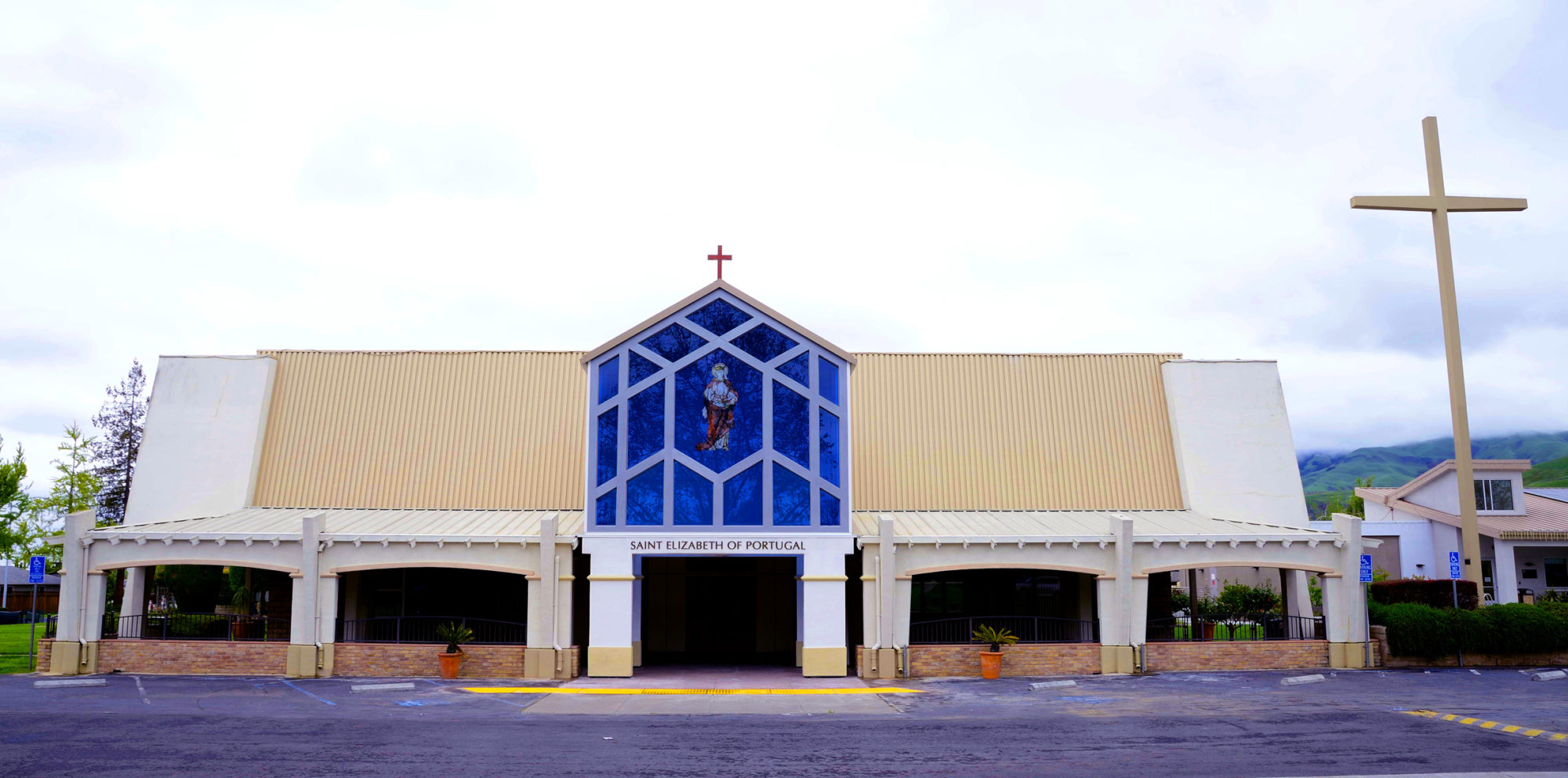St. Elizabeth Catholic Church is a diverse and welcoming community, fostering a deeper love of Christ through worship, faith formation, and service to others.
History
St. Elizabeth Catholic church was established June 10, 1968. The first parish in Milpitas, St. John the Baptist, established in 1877, had grown to about 2400 Catholic families. The growth and development of the Milpitas area and northeast San Jose made it necessary to establish a second parish in the area.
The new parish of about 1200 families began normal operations in a rented store in the Fiesta Shopping Plaza on the third Sunday of September 1968. The limited seating capacity of 350 in the temporary Church and the continuing growth of the area was the requirement to lay the groundwork for a church facility at the 12-acre parish site on Sequoia Drive.
After several months of planning and study, the Parish Building and Financial Committee determined that the future building would be multipurpose. Fred T. Houweling and Robert W. Hagman, associated architects, were hired to design the building. Freitas Construction Company began the construction on December 18, 1969. After 185 days of construction, the first Mass in the new structure was celebrated on October 4, 1970. Hundreds of parishioners worked to prepare and ready the building for occupancy, an estimated $14,000 was saved by their contributed time, talent and treasure.
In the past coupled of years, there have been numerous upgrades and renovations made to St. Elizabeth Church. New stained glass windows throughout the chapel and church, Our Lady of La Vang, Our Lady of Guadalupe and St. Elizabeth of Portugal statues, new Altar, Processional Cross, Candlesticks and Candles, new chairs in the chapel and new paint to name a few. Again, through the contributed time, talent and treasure much were saved in these update.
Patron St. Elizabeth
Elizabeth was a Spanish princess who was given in marriage to King Denis of Portugal at the age of twelve. She was very beautiful and very lovable. She was also very devout and went to Mass every day. Elizabeth was a holy wife, but although her husband was fond of her at first, he soon began to cause her great suffering. Though a good ruler, he did not imitate his wife’s love of prayer and other virtues. In fact, his sins of impurity gave a great candle to the people.
Later, to make matters worse, the King believed a lie told about Elizabeth and one of her pages by another page, who was jealous of his companion. In great anger the King ordered the one he believed guilty, to be sent to a lime-burner. The lime-burner was commanded to throw into his furnace on the first page who came. The good page set out obediently, not knowing death was waiting for him. On his way, he stopped for Mass, since he had the habit of going daily. The first Mass had begun, so he stayed for a second one. In the meantime, the King sent the wicked page to the lime-burner to find out if the other had been killed. And so it was this page who was thrown into the furnace! When the King learned what had happened, he realized that God had saved the good page, punished the liar, and proven Queen Elizabeth to be innocent.
This amazing event helped greatly to make the King live better. He apologized to his wife in front of everyone and began to have a great respect for her. In his last sickness, she never left his side, except for Mass, until he died a holy death. St. Elizabeth lived for eleven more years, doing even greater charity and penance. She was a wonderful model of kindness toward the poor and a successful peacemaker between members of her own family and between nations.
Because St. Elizabeth was faithful to daily Mass, she found the strength to carry her many great crosses. And because her page was faithful to daily Mass, he escaped death. We should try our best to make it a habit to go to Mass daily.

